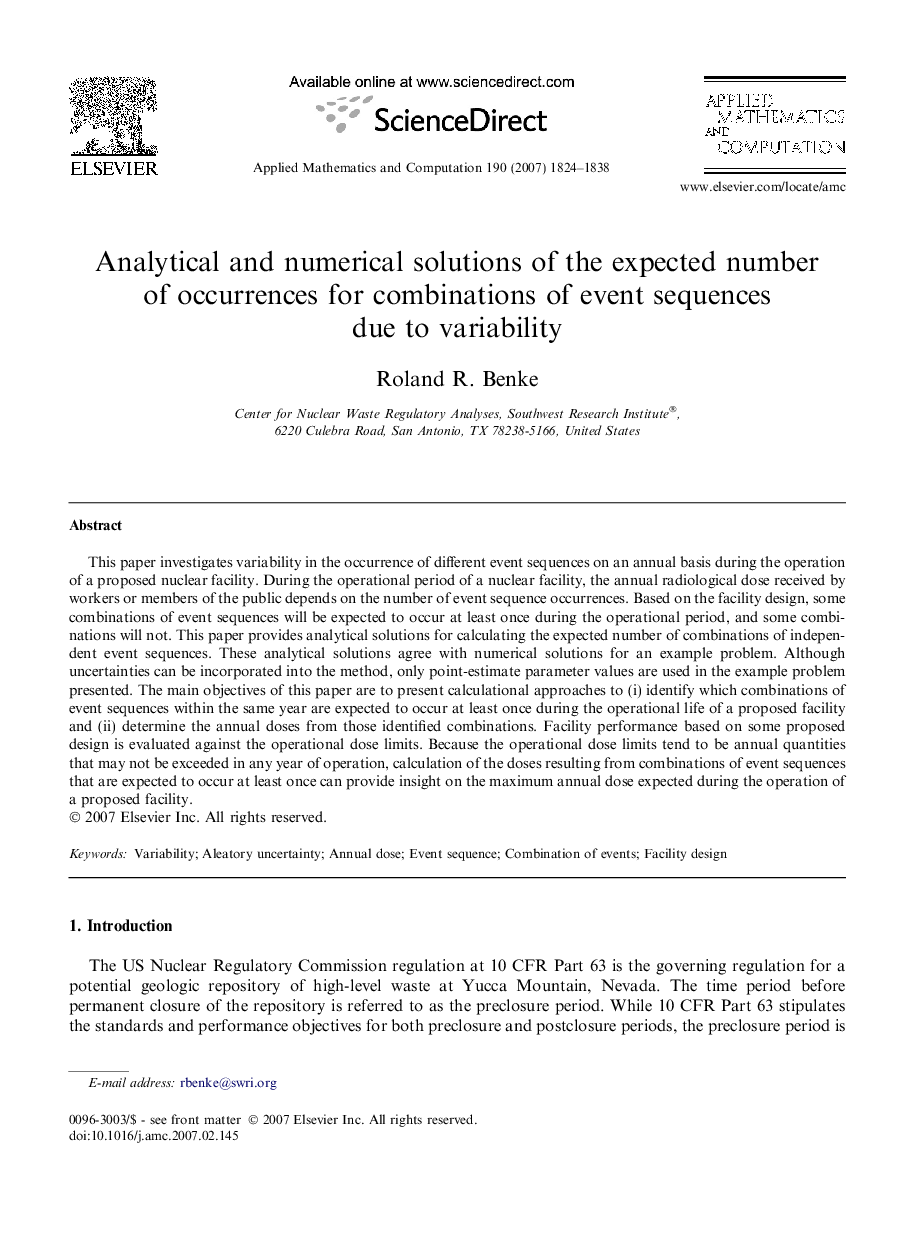| Article ID | Journal | Published Year | Pages | File Type |
|---|---|---|---|---|
| 4635035 | Applied Mathematics and Computation | 2007 | 15 Pages |
Abstract
This paper investigates variability in the occurrence of different event sequences on an annual basis during the operation of a proposed nuclear facility. During the operational period of a nuclear facility, the annual radiological dose received by workers or members of the public depends on the number of event sequence occurrences. Based on the facility design, some combinations of event sequences will be expected to occur at least once during the operational period, and some combinations will not. This paper provides analytical solutions for calculating the expected number of combinations of independent event sequences. These analytical solutions agree with numerical solutions for an example problem. Although uncertainties can be incorporated into the method, only point-estimate parameter values are used in the example problem presented. The main objectives of this paper are to present calculational approaches to (i) identify which combinations of event sequences within the same year are expected to occur at least once during the operational life of a proposed facility and (ii) determine the annual doses from those identified combinations. Facility performance based on some proposed design is evaluated against the operational dose limits. Because the operational dose limits tend to be annual quantities that may not be exceeded in any year of operation, calculation of the doses resulting from combinations of event sequences that are expected to occur at least once can provide insight on the maximum annual dose expected during the operation of a proposed facility.
Related Topics
Physical Sciences and Engineering
Mathematics
Applied Mathematics
Authors
Roland R. Benke,
